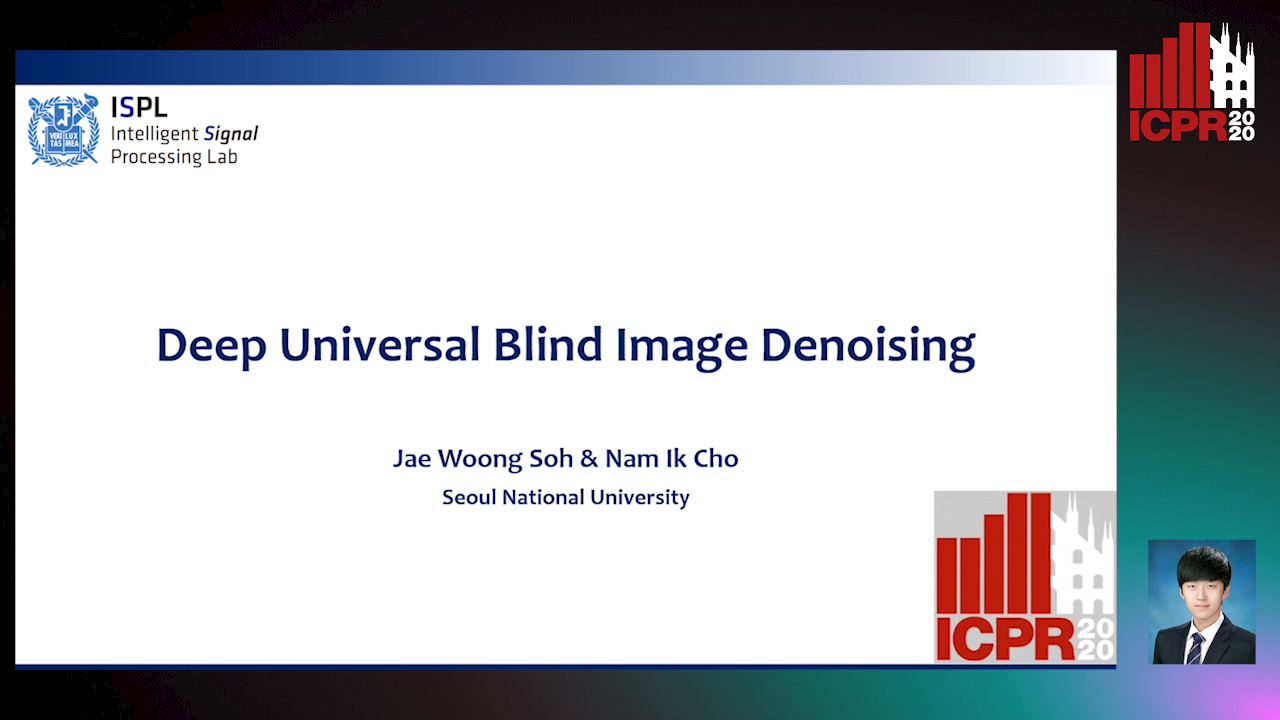Jae Woong Soh
Paper download is intended for registered attendees only, and is
subjected to the IEEE Copyright Policy. Any other use is strongly forbidden.
Papers from this author
Deep Universal Blind Image Denoising

Auto-TLDR; Image Denoising with Deep Convolutional Neural Networks
Image denoising is an essential part of many image processing and computer vision tasks due to inevitable noise corruption during image acquisition. Traditionally, many researchers have investigated image priors for the denoising, within the Bayesian perspective based on image properties and statistics. Recently, deep convolutional neural networks (CNNs) have shown great success in image denoising by incorporating large-scale synthetic datasets. However, they both have pros and cons. While the deep CNNs are powerful for removing the noise with known statistics, they tend to lack flexibility and practicality for the blind and real-world noise. Moreover, they cannot easily employ explicit priors. On the other hand, traditional non-learning methods can involve explicit image priors, but they require considerable computation time and cannot exploit large-scale external datasets. In this paper, we present a CNN-based method that leverages the advantages of both methods based on the Bayesian perspective. Concretely, we divide the blind image denoising problem into sub-problems and conquer each inference problem separately. As the CNN is a powerful tool for inference, our method is rooted in CNNs and propose a novel design of network for efficient inference. With our proposed method, we can successfully remove blind and real-world noise, with a moderate number of parameters of universal CNN.
Single Image Super-Resolution with Dynamic Residual Connection
Karam Park, Jae Woong Soh, Nam Ik Cho

Auto-TLDR; Dynamic Residual Attention Network for Lightweight Single Image Super-Residual Networks
Abstract Slides Poster Similar
Deep convolutional neural networks have shown significant improvement in the single image super-resolution (SISR) field. Recently, there have been attempts to solve the SISR problem using lightweight networks, considering limited computational resources for real-world applications. Especially for lightweight networks, balancing between parameter demand and performance is very difficult to adjust, and most lightweight SISR networks are manually designed based on a huge number of brute-force experiments. Besides, a critical key to the network performance relies on the skip connection of building blocks that are repeatedly in the architecture. Notably, in previous works, these connections are pre-defined and manually determined by human researchers. Hence, they are less flexible to the input image statistics, and there can be a better solution for the given number of parameters. Therefore, we focus on the automated design of networks regarding the connection of basic building blocks (residual networks), and as a result, propose a dynamic residual attention network (DRAN). The proposed method allows the network to dynamically select residual paths depending on the input image, based on the idea of attention mechanism. For this, we design a dynamic residual module that determines the residual paths between the basic building blocks for the given input image. By finding optimal residual paths between the blocks, the network can selectively bypass informative features needed to reconstruct the target high-resolution (HR) image. Experimental results show that our proposed DRAN outperforms most of the existing state-of-the-arts lightweight models in SISR.